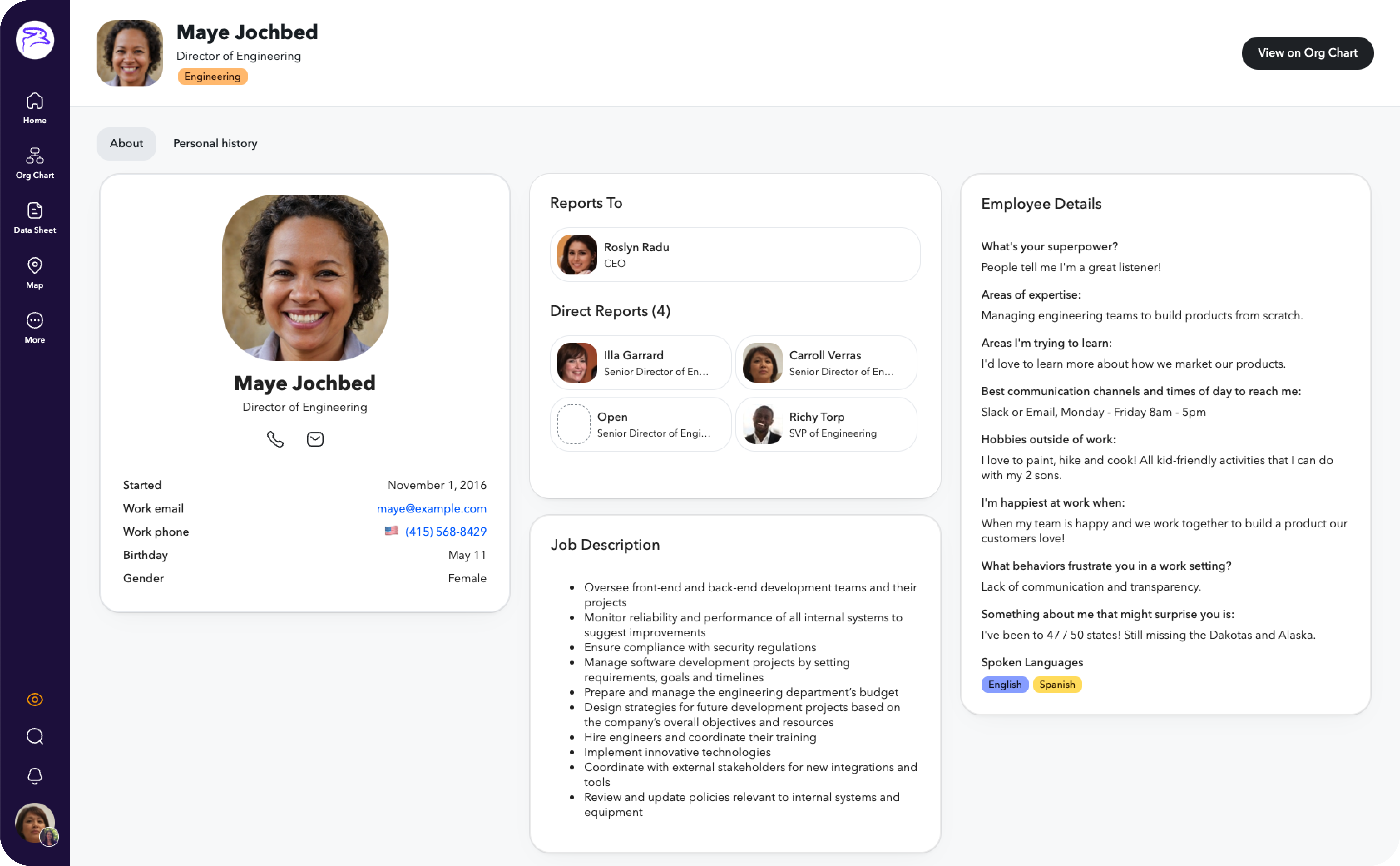
Shortly after many companies upped their benefits to accommodate specific needs, such as specialized healthcare, mental wellness, and family planning, organizations are now slashing benefits due to financial pressure. And working parents are paying the price.
This movement is problematic, especially since, given the change in laws, more births will take place and parents of all kinds will need certain accommodations.
While we can’t predict how this will transform the nation’s workplace, we can say with confidence that companies need to continue supporting their people. And although offering extended parental leave is critical to supporting (and retaining) your people, there are other ways you can – and should – provide support for parents.
Below are four best practices, with real-life examples, for ways you can continue to prioritize your working parents’ needs.
If you want to support and retain your working parents, look to offer flexibility. According to a study by Catalyst and CNBC, 64% of working parents are considering changing careers for a better work-life balance to meet their new priorities and schedules.
Unfortunately, changing careers – or even taking parental leave, for that matter – often negatively affects women. According to Maven Clinic, “moms have lower results than dads for equity in recognition, promotions, compensation, involvement, and favoritism.”
To combat unintentional favoritism, consider shifting to a results-based approach instead of one that requires employees to work the standard 9-5 (which, as we know, doesn’t mean your people are more productive).
Of course, people can interpret this “flexibility” in a variety of ways, so it’s best to survey your employees to help determine company-wide definitions and expectations.
Some ideas for workplace flexibility include:
Roughly 35% of people left their jobs in 2021 – without another lined up – due to lack of employee support and well-being.
And for parents, wellness care extends beyond parental leave. To establish continued support for parents, consider building out family planning and ongoing benefits, including:
Once again, before you add benefits you think working parents want, send out surveys and collect feedback to ensure you’re addressing employee needs. Kim Colucci, People Director at Mixbook, says it’s important to ask the right questions to understand what you’re working toward and why. She explains: “It’s easy to copy and paste ideas from other companies. But how do you know that other organizations’ solutions will meet the needs of your people?”
Employee resource groups (ERGs) are a fantastic way to help support your people, including working parents. In short, ERGs connect employees of similar backgrounds and characteristics to share resources and have discussions within a supportive environment.
A Working Parent ERG can connect new and seasoned parents and provide educational resources. One way ERG leaders help foster a sense of community is through routinely engaging with new hires’ employee profiles. By doing so, leaders can personally invite members to the group and further create a culture of belonging. Luckily, modern people operations platforms allow employees to personalize their employee profiles, such as adding hobbies, preferences, and work history.

In this example, Maye disclosed that she has two sons and loves partaking in kid-friendly activities. She would be a great candidate for a Working Parent ERG.
What’s more, ERG leaders can advocate for benefits for all new parents, not just biological mothers. In fact, equality of parental leave is even more important for families of different structures, including LGBTQ+ and adoptive families.
Specifically, a study conducted by UCLA and the Thomas Reuters Foundation found that same-sex male couples receive five fewer months of paid leave than heterosexual couples. And while the Family and Medical Leave Act protects adoptive families, granted benefits come down to the employer (which often causes financial stress and loss of insurance).
When an employee takes parental leave, you want that person – and their team – to feel confident moving forward. That’s why creating an offboarding and onboarding program for parental leave is so critical for the health of your teams and people.
Below are best practices when it comes to supporting your people as they prepare for and return from parental leave.
When companies establish a proactive workflow for redistributing work, all employees feel prepared for the temporary loss of a teammate. Along with announcing an employee’s leave, managers should communicate this redistribution of work to remaining team members. Additionally, the person leaving can hold transition meetings so all work carries over seamlessly.
Keisha Newcomb, Talent Acquisition Specialist at ChartHop, encourages teams to organize documents and projects so everyone’s on the same page. She explains to soon-to-be parents, “It is much easier to transfer tasks and responsibilities to coworkers that are helping to support your role during [your parental] leave if everything is organized.”
Transitioning new parents back to work comes with important decisions, as this time can either lead to a supportive return or a quick burnout. Consider phasing in your new working parents or holding a mini onboarding meeting week.
This may look like:
Research reveals companies that truly support working parents have an 86% reduction in the number of parents who want to leave. So whether your motivation to strengthen your culture is fiscal-focused or people-focused (or both), it’s clearly beneficial to all to support working parents.
To do so, boost your benefits and refresh your procedures to help provide support for parents. It’s also important to recognize that offboarding and onboarding surrounding leave are equally critical for your people’s wellness and long-term retention. Ultimately, by prioritizing your people, including working parents, you’ll help deliver needed support so they can be their best selves in and out of the office (even if that office is a kitchen table).
Sign up for a free demo today.